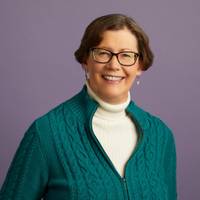Do You Drive With Your Pet Unrestrained? Here Are 3 Reasons to Reconsider That


With Labor Day weekend fast approaching — when many Americans will make one more road trip, often with a pet onboard, to catch summer’s last gasp — Volvo is sharing the results of a new pet-travel safety study conducted on its behalf by The Harris Poll. Released to coincide with National Dog Day (today, don’tcha know?), the unique study reveals just how distracting driving with an unrestrained pet can be.
Related: Road-Tripping With Pets? Here’s What You Need to Know
Part online survey (2,000 adults 18 and older, including 1,433 pet owners) and part observational study (15 licensed drivers), “Volvo Reports: Keeping Pets Safe on the Road” shares pet-centric Americans’ concerns about traveling with pets, as well as their actual behavior while driving with their dogs. With in-car cameras recording, study participants drove with their dogs unrestrained and restrained over the course of nearly four weeks. Drivers were analyzed for a total of 30 hours, averaging two hours per driver.
Here are the three major findings the study revealed that should make you rethink driving with an unrestrained pet:
1. Dogs Double Danger
The number of unsafe driving behaviors more than doubled when a dog was unrestrained: 649 for the group when dogs were unrestrained versus 274 when restrained
2. … And That Goes Double for Distraction
The time drivers spent distracted also more than doubled when the dog was unrestrained: 219 minutes for the group versus 99 minutes.
3. It’s Not Worth the Stress
When dogs were unrestrained, stress levels rose for humans and canines alike: Heart rates for unrestrained dogs were seven beats faster per minute, and human heart rates dropped by 28 to 34 beats per minute when dogs were restrained.
While eye-opening and illustrative of just how distracting an unrestrained pet can be, the study statistics and accompanying video (above) can’t really demonstrate the potentially devasting consequences of driving with a restrained pet. When not safely strapped in with a safety harness or carrier or contained in a tied-down crate, pets become dangerous projectiles during hard stops and accidents. Not only can they be harmed, they can also inflict injuries on other passengers. And if pets escape the vehicle, they can be hit by other vehicles or cause accidents as other drivers try to avoid hitting them.
Expert Advice
Take it from someone who’s seen it: veterinarian Elisa Mazzaferro. An emergency and critical care vet with Cornell University Veterinary Specialists in Connecticut, Mazzaferro said in a statement that a pet allowed to roam in a car “poses serious risk for both drivers and their pets, both in terms of causing distractions and increasing the chances of serious injury in the event of an accident. Unfortunately, in my field, we see the potential devastating consequences regularly, many of which can avoided by simply ensuring our animals are safely secured.”
Here are Mazzaferro’s travel safety tips, which we strongly echo:
- Don’t drive with your pet in the front seat: In a collision, a dog or cat can be thrown from the seat even if restrained; additionally, the pet can be injured if the passenger airbag deploys. According to the study, 70 percent of drivers let their dogs do this.
- Never drive with a pet on your lap: Not only is it a driving distraction, but the pet can get caught in the steering wheel or tossed through the windshield or side window in a crash.
- Never drive with your pet unrestrained: Besides being a distraction or becoming a projectile, an abrupt stop can cause a pet to fall and incur injury. Worse, they can jump out open windows into moving traffic or escape the vehicle during a collision, subjecting them to injury or getting lost. Some 69 percent of study respondents allow this.
- Don’t allow your pet to lean out a car window: Even if restrained this just isn’t a good idea — debris can hit their eyes, potentially causing injury or possible blindness. More than half of pet owners — 58 percent — said they allow this.
Awareness Is Improving
The Volvo/Harris Poll study did offer some encouraging findings. On the whole, Americans seem more aware of how distracting unrestrained pets can be in a car. According to the study, 77 percent of respondents said, “people don’t take vehicular dog safety seriously enough,” with almost one-third of dog owners saying they left their dog at home because of safety concerns — that’s an 8 percent increase from a similar 2018 online study.
And many of the respondents want automakers to prioritize pet safety: Nearly two-thirds said manufacturers should offer more dog safety features in their vehicles, and almost half said pet safety features will influence their next vehicle purchase.
More From Cars.com:

Cars.com’s Editorial department is your source for automotive news and reviews. In line with Cars.com’s long-standing ethics policy, editors and reviewers don’t accept gifts or free trips from automakers. The Editorial department is independent of Cars.com’s advertising, sales and sponsored content departments.

Former Assistant Managing Editor-Production Jen Burklow is a dog lover; she carts her pack of four to canine events in her 2017 Ford Expedition EL.
Featured stories




